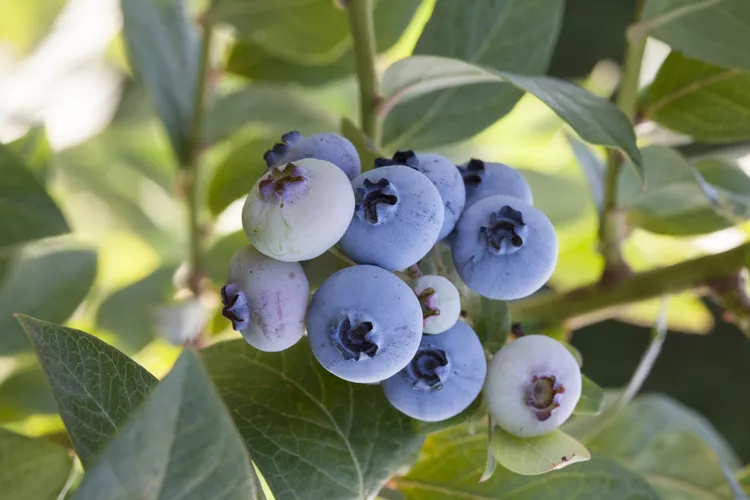Many gardeners dream of growing succulent blueberries in their backyards but have difficulty finding blueberry companion plants that grow in the acidic soil conditions that blueberries prefer. Fortunately, plenty of acid-loving colorful ornamentals and tasty edibles make fantastic companion plants, and some even repel pests and enhance the blueberry harvest. Whether you grow blueberries in your garden or in small pots on a patio, add a few of the ten best blueberry companion plants to grow happily beside your berries.
What is Acidic Soil?
Acid soils have a pH value of less than 5.5 for most of the year. They are associated with a number of toxicities, deficiencies, and other plant-restricting conditions and have high levels of aluminum and iron. Acid soil is found in the humid northern temperate zone, where evergreens grow, and in the humid tropics, which is covered by savannah and tropical rainforests.
Strawberries
Strawberries and blueberries go together in smoothies and yogurt parfaits, but strawberries also make excellent blueberry companion plants in the garden. Both berry plants love slightly acidic soils and prefer full sun and regular water. Use low-growing strawberries as a border plant around taller blueberries, or grow strawberries with compact lowbush blueberries in a container garden.
Azaleas and Rhododendrons
Azaleas and rhododendrons thrive in acidic soils, so you know they’ll be great companions for acid-loving blueberries. Even better, azaleas and rhododendrons generally bloom around the same time that blueberries start to flower. They can increase pollinator activity around your blueberries and enhance the blueberry crop.
Alliums
Chives, onions, and ornamental alliums emit a pungent odor that drives away many common garden pests. Alliums are popular for organic pest control in vegetable gardens and work well in berry patches. When grown as blueberry companion plants, alliums deter Japanese beetles, deer, and aphids.
Native Wildflowers
Blueberry shrubs add structure and interest to native or woodland gardens, but you can elevate the look of your blueberry patch even further by growing native wildflowers nearby. Plants like bee balm (shown here), coneflower, lupine, and columbine all have similar growing needs as blueberries, and planting them together in an ornamental bed streamlines your gardening chores. Plus, native wildflowers lure pollinators to blueberry shrubs and improve the berry harvest.
Thyme
Like other strongly scented herbs, thyme has pest-repellent properties, and its flowers attract an assortment of beneficial insects. When grown as a blueberry companion plant, thyme can draw in parasitic wasps that keep blueberry pests in check. Some varieties, such as creeping thyme, are low-maintenance groundcovers that suppress weeds and add extra color to the blueberry beds.
Basil
Basil is a light feeder that won't compete with blueberries for soil nutrients. The shorter stature of basil plants means they won't overshadow even lowbush blueberries. Beyond that, basil adapts to slightly acidic conditions, and basil's scent repels some garden pests. If you love trying out new flavor combos in the kitchen, use blueberries and basil to make delicious, summery beverages or desserts.
Heather
Heather is an often overlooked ornamental plant, but it’s closely related to blueberries and has similar care requirements. Like blueberries, heather prefers well-draining, acidic soil and full sun. When in flower, heather adds brilliant color to garden beds, and it’s always a hit with bees.
Lemon Balm
Lemon balm is a fragrant herb that naturally controls a range of garden pests and increases pollinator activity. As a member of the mint family, lemon balm is easy to grow but tends to spread. To keep lemon balm from taking over, grow it as a blueberry companion plant in pots nearby.
Borage
Borage is commonly grown in vegetable beds because its flowers are irresistible to bees and predatory wasps. Aside from being an excellent plant for pest control, some evidence suggests that borage can improve the growth of nearby plants. As it grows, borage enriches the soil with trace minerals, and it might increase the disease resistance of neighboring plants.
Cranberries
Blueberries and cranberries are closely related plants with similar growing needs. Many gardeners assume they need a water feature to grow cranberries, but water is only used to simplify the harvesting process in commercially grown cranberry crops. Cranberries are not aquatic plants; they can flourish in acidic garden beds and are suitable for container gardening.




















